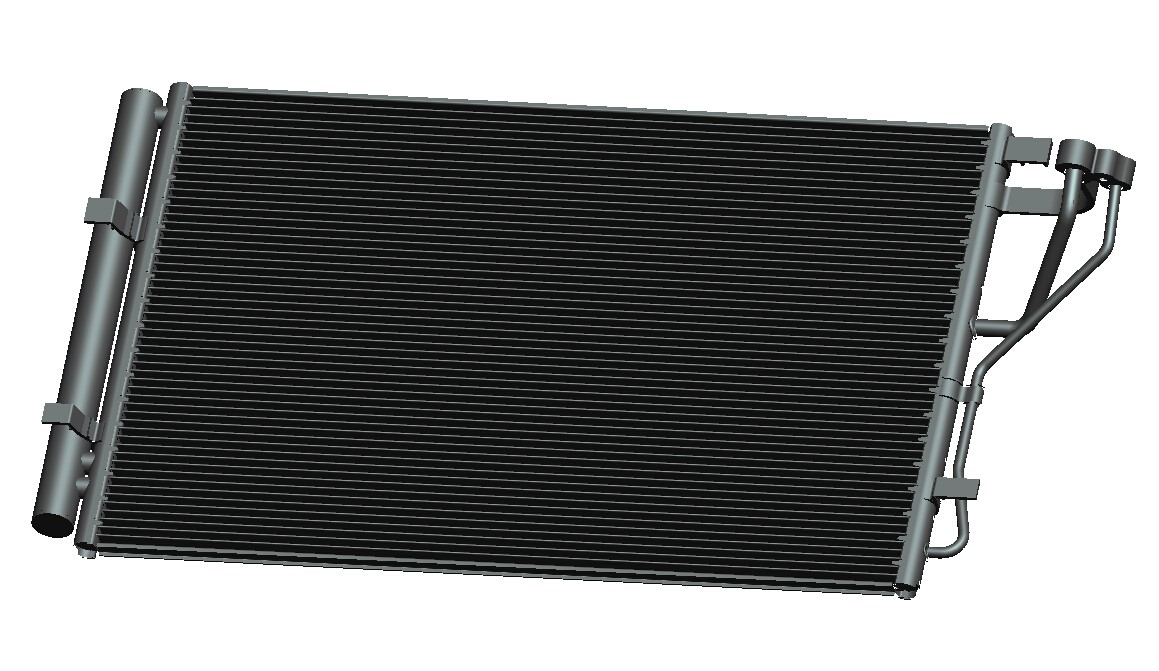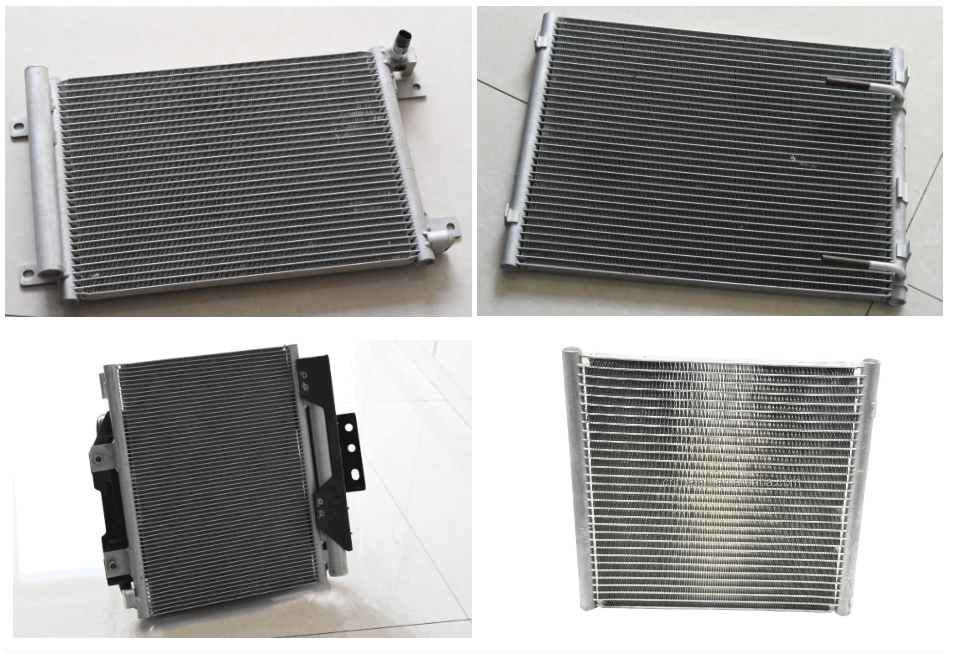- All
- Product Name
- Product Keyword
- Product Model
- Product Summary
- Product Description
- Multi Field Search
| Availability: | |
|---|---|
Product name : parallel flow with fins and microchannel flat tube auto car airconditioner condenser
PRODUCT DESCRIPTION | ||
NO. | ITEM | DESCRIPTION |
1 | Material | Aluminum alloy 3003 |
2 | Outer Dimension (L*W*H) | Up to 600*600*40 mm |
3 | Working Pressure | 3 Bars |
5 | Refrigeration Capacity | Up to 3 KW |
7 | Medium | Refrigerant material |
8 | Type | Flat tube fin heat exchanger in parallel flow |
9 | Manufacturing Method | Controlled atmosphere brazing |
10 | Cooling Method | Air to coolant |
11 | Surface Finish | Natural or powder coating or zinc coating |
12 | Warranty time | 1 year |
13 | Place of Region | Jiangsu province of China |
14 | Reference Standard | GB/T 3190-2008 |

Techniques Used in Car Condenser:
1. Brazing: The tubes and fins of the condenser are brazed together to form a strong and leak-proof unit.
2. Ultrasonic Cleaning: This technique is used to clean the condenser of any dirt or debris that may have accumulated over time.
3. Pressure Testing: The condenser is tested for leaks and pressure resistance to ensure its durability.
 ▲ Auto air conditioning condenser
▲ Auto air conditioning condenser
The condenser acts as a heat exchanger that is used to convert high-pressure gas to a high-pressure liquid, then gets streamed to the Receiver Dryer until it continues to the expansion valve. The condenser works to reduce the temperature of the refrigerant at the time of the condensation process. When the warm temperature is successfully lowered, a cool liquid will be formed which will be released through the car air conditioner holes.

• Universal fits to all cars
Car Condenser:
Material: Aluminum is the favored material for car condensers due to its lightweight nature, durability, and ability to resist corrosion.
Size: The condenser's size varies depending on the specific car's make and model. It is designed to fit seamlessly in the available space in front of the radiator.
Fins: The condenser boasts fins that enhance its surface area, enabling superior dissipation of heat.

Types of Car Condenser:
Tube and Fin Condenser: This is the most prevalent car condenser type, where the refrigerant circulates through tubes encompassed by fins.
Serpentine Condenser: In this type, the refrigerant travels through a single, winding tube encircled by fins.
Parallel Flow Condenser: This variant features numerous parallel tubes, facilitating enhanced heat transfer and heightened efficiency.
Product name : parallel flow with fins and microchannel flat tube auto car airconditioner condenser
PRODUCT DESCRIPTION | ||
NO. | ITEM | DESCRIPTION |
1 | Material | Aluminum alloy 3003 |
2 | Outer Dimension (L*W*H) | Up to 600*600*40 mm |
3 | Working Pressure | 3 Bars |
5 | Refrigeration Capacity | Up to 3 KW |
7 | Medium | Refrigerant material |
8 | Type | Flat tube fin heat exchanger in parallel flow |
9 | Manufacturing Method | Controlled atmosphere brazing |
10 | Cooling Method | Air to coolant |
11 | Surface Finish | Natural or powder coating or zinc coating |
12 | Warranty time | 1 year |
13 | Place of Region | Jiangsu province of China |
14 | Reference Standard | GB/T 3190-2008 |

Techniques Used in Car Condenser:
1. Brazing: The tubes and fins of the condenser are brazed together to form a strong and leak-proof unit.
2. Ultrasonic Cleaning: This technique is used to clean the condenser of any dirt or debris that may have accumulated over time.
3. Pressure Testing: The condenser is tested for leaks and pressure resistance to ensure its durability.
 ▲ Auto air conditioning condenser
▲ Auto air conditioning condenser
The condenser acts as a heat exchanger that is used to convert high-pressure gas to a high-pressure liquid, then gets streamed to the Receiver Dryer until it continues to the expansion valve. The condenser works to reduce the temperature of the refrigerant at the time of the condensation process. When the warm temperature is successfully lowered, a cool liquid will be formed which will be released through the car air conditioner holes.

• Universal fits to all cars
Car Condenser:
Material: Aluminum is the favored material for car condensers due to its lightweight nature, durability, and ability to resist corrosion.
Size: The condenser's size varies depending on the specific car's make and model. It is designed to fit seamlessly in the available space in front of the radiator.
Fins: The condenser boasts fins that enhance its surface area, enabling superior dissipation of heat.

Types of Car Condenser:
Tube and Fin Condenser: This is the most prevalent car condenser type, where the refrigerant circulates through tubes encompassed by fins.
Serpentine Condenser: In this type, the refrigerant travels through a single, winding tube encircled by fins.
Parallel Flow Condenser: This variant features numerous parallel tubes, facilitating enhanced heat transfer and heightened efficiency.